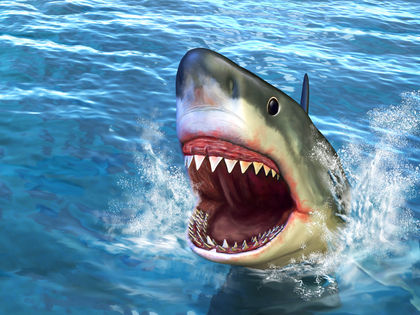Cartilaginous Fish

The cartilaginous fish, or Chondricthyes, include the sharks, rays, skates, and chimaeras. There are over eight hundred living species of sharks and rays, and about thirty species of chimaeras. Cartilaginous fish are true fish. They have fins and breathe with gills. Unlike the more familiar bony fish, the Osteichythes, the skeletons of the cartilaginous fish are made of cartilage. Other features that distinguish the cartilaginous fish from the bony fish are multiple gill slits, tiny toothlike scales, nostrils on the side of the head, teeth that are not fused to the jaw, and internal fertilization . Internal fertilization also occurs in some bony fish such as sea horses, guppies, and mollies. The ancestors of cartilaginous fish and bony fish diverged in the late Silurian, more than 400 million years ago.
Sharks are large, long-lived, slow-growing ocean predators. The whale shark ( Rhincodon typhus ) is the world's largest fish; adults can be as long as 18 meters (59 feet). The spiny dogfish shark ( Squalus acanthias ) is the most studied shark, and while it rarely grows longer than 1.2 meters (almost 4 feet), it matures at 35 years and lives to be 70 or 80 years old. Sharks have internal fertilization and many shark species bear live young after a gestation of six or more months. The number of sharks in a clutch is often low, but can range from one or two to hundreds, depending on the species. The combination of slow maturity, long gestation, and small clutches means that shark populations cannot increase very rapidly. As a result, shark populations are very vulnerable to overfishing.
Sharks are tremendous predators, with their mouths full of ever-sharp teeth and jaw strength capable of exerting over 2,500 kg/cm2 (30,000 psi) of pressure at the tooth tips. (A single shark may produce over ten thousand teeth in its lifetime, and as a result, the most common fossils of the cartilaginous fish are their teeth.) Sharks also have excellent senses of smell, waterborne vibrations, and the ability to sense the faint magnetic fields generated by the muscles of their prey. The large white shark ( Carcharodon carcharias ) preys on seals, sea lions, and large fish, and has been known to attack swimmers and boats.
Rays are bottom-dwelling fishes that are able to "fly" through the water with their enlarged and flattened pectoral fins. Stingrays can cause excruciating pain using a venomous stinger at the base of their tail. Electric rays can generate a shock of 200 volts. The manta ray has a wing span of up to 7 meters (almost 23 feet) and is sometimes seen following ships in the open ocean.
Chimearas, also known as ratfishes, are a small group of rarely seen bottom-dwelling cartilaginous fish with large platelike teeth, no scales, and long skinny tails.
SEE ALSO Bony Fish ; Ocean Ecosystems
Virginia Card
Bibliography
Carl, E. Biology of Fishes, 2nd ed. Philadelphia, PA: W. B. Saunders, Co., 1997.
Moyers, Peter B., and Joseph J. Cech, Jr. Fishes: An Introduction to Ichthyology, 4th ed.Englewood Cliffs, NJ: Prentice Hall, 1999.